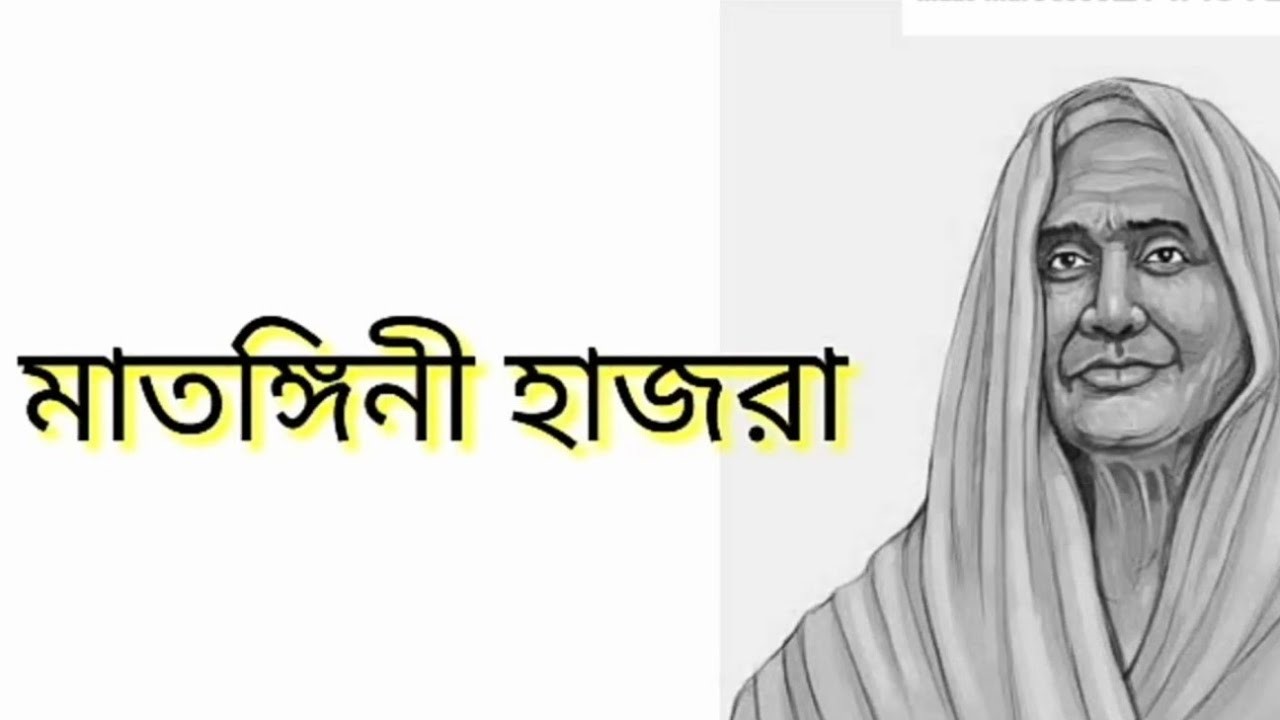Description

Disclaimer: Copyright infringement not intended.
Context
- President Droupadi Murmu, on Independence Day eve, paid tribute to the remarkable women who fought for India's freedom.
- She highlighted the contributions of two notable figures: Matangini Hazra, Kanaklata Barua
- Matangini Hazra, at the age of 73, faced British bullets with unwavering resolve, while Kanaklata Barua, a mere 17 years old, displayed similar fearlessness in their shared pursuit of freedom.
Details
Roles they play in India’s freedom struggle
- Matangini Hazra, a resolute freedom fighter hailing from West Bengal, actively engaged in multiple movements, notably the Quit India Movement.
- Kanaklata Barua, a youthful revolutionary hailing from Assam, spearheaded a procession aimed at unfurling the Tricolour during the Quit India Movement.
- These two exemplary women showcased unparalleled bravery and unwavering commitment to the noble cause of India's independence.
Who was Matangini Hazra?
- She was born in a village named Hogla, near Tamluk, in 1869.
- Born into a humble family of farmers, Matangini faced financial constraints that prevented her from receiving a formal education.
- Due to the lack of resources to arrange a substantial dowry, she was married at the age of 12 to Trilochan Hazra, a 60-year-old resident of Alinan village in Medinipur.
- After her husband’s death, she dedicated herself to social causes and became deeply involved in the Nationalist movement, supporting Mahatma Gandhi’s ideals.
- In the book 'Code Name God,' written by Indian-American scientist and author Mani Bhaumik, he recounts, "Matangini's deep admiration for Gandhi was so profound that in our village, she earned the nickname Gandhiburi, signifying the elderly woman dedicated to Gandhian principles..."
- Hazra actively engaged in several protests, like the Civil Disobedience Movement and the Salt March.
- Her involvement in the Civil Disobedience Movement resulted in multiple brief incarcerations. It was during these periods of confinement that she joined the ranks of the Indian National Congress, actively following Gandhi's path by engaging in spinning her own khadi cloth.
- During Quit India Movement in 1942, Matangini Hazra, then 73 years old, fearlessly led a substantial procession of approximately 6,000 protestors, rallying for the occupation of the Tamluk police station.
Who was Kanaklata Barua?
- Kanaklata Barua, a youthful martyr of the Quit India Movement, emerged as an embodiment of bravery and resolute spirit.
- At a mere 17 years of age, she assumed leadership of the Mrityu Bahini, a group of freedom fighters, in a daring endeavor to unfurl the Tricolour at the Gohpur police station in Assam on September 20, 1942.
- Her unflinching determination to lead the procession was remarkable, and her valiant actions left an indelible mark.
- In the face of a confrontation with the police, she was tragically shot and killed while clutching onto the national flag.
- Her sacrifice became a wellspring of inspiration, especially at a juncture when women's participation in the struggle for freedom was gaining momentum.
- As a tribute to her extraordinary courage, a Coast Guard vessel was christened in her honor in the year 2020.
Lasting impact on India’s history
- Matangini Hazra's ultimate sacrifice resulted in her being revered as a martyr and played a pivotal role in the creation of a grassroots governance structure in Medinipur.
- Her memory is commemorated through the naming of streets, educational institutions, and communities in her honor.
- Kanaklata Barua's legacy continues to thrive through the Coast Guard vessel christened in her name, serving as a lasting emblem of her profound impact on Assam's historical narrative.
Women’s participation in the freedom movement
- Both these remarkable women serve as prime examples of the pivotal roles that women undertook in the fight for freedom.
- Through their courage, leadership, and sacrifices, they dismantled societal stereotypes, instigating a wave of inspiration that urged numerous other women to rally behind the cause.
- Their narratives stand as concrete proof of the indispensable contributions made by women in India's relentless pursuit of independence.

Conclusion
Both Matangini Hazra and Kanaklata Barua exemplified the essential roles that women played in India's struggle for freedom. Their sacrifices, bravery, and leadership continue to inspire generations, reminding us of the indomitable spirit of those who fought for a free India.
|
PRACTICE QUESTION
Q. Explain the participation of women in Indian freedom movement and critically analyse the factors that limited the participation. (250 Words)
|
https://indianexpress.com/article/explained/explained-history/droupadi-murmu-matangini-hazra-kanaklata-barua-who-were-these-freedom-fighters-8892591/







